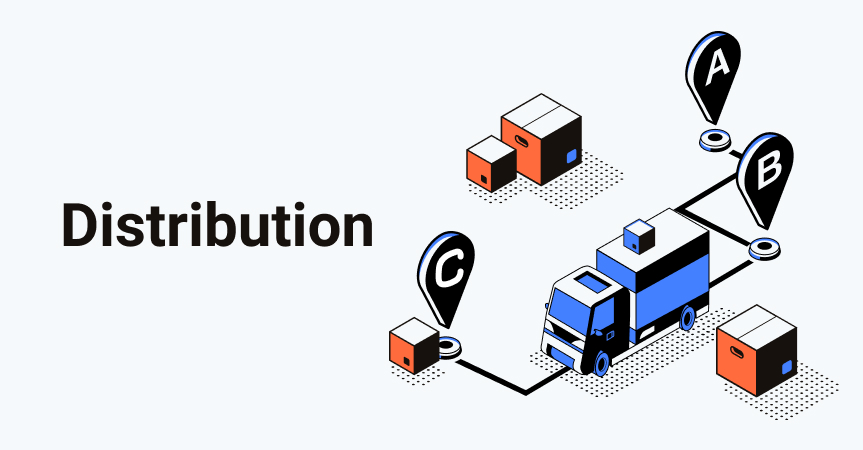Introduction
The project report for Distribution business is as follows.
A distribution company is the link in the supply chain that transports goods and materials from a manufacturer to a retailer.
A distribution business, also known as a sales and distribution company, purchases goods produced by a manufacturer in order to resell them to retailers and profit. There are two kinds of distribution companies. In recent times there’s been a considerable growth in distribution outlets. As per the India Brand Equity Foundation (IBEF), the Indian retail industry is expected to rise to $1.19 trillion by 2023 from $6872 billion in 2019. The country has over 12 million distribution network locations, the majority of which are family-owned enterprises.
The fast-moving consumer goods (FMCG) industry is expected to develop at a pace of 10-12 percent each year over the next ten years. As per the Boston Consulting Group, India will have the globe ‘s third consumer based economy by 2025.
There are two kinds of distribution companies:
- Retail distributors are businesses that sell directly to customers.
- Wholesale distributors are businesses that resale products to end users.
By 2021, India’s Business to Business (B2B) e-commerce sector is estimated to be worth $900 billion. India is anticipated to be the globe’s quickest emerging e-commerce industry, thanks to increased spending and a rapid growth in online consumers. Online retail sales are anticipated to more than quadruple by 2022, from $40 billion in 2019 to $120 billion.

The majority of Indian producers have a three-tiered selling and distribution system that has developed through time. Redistribution stockists, wholesalers, and retailers are all part of this structure. For instance, an FMCG business running across India may have from 40 and 80 redistribution stockists (RS).
Market Potential Of Distribution Business
The global smart transportation market was worth USD 110.53 billion in 2022 and is predicted to increase at a compound annual growth rate (CAGR) of 13.0% between 2023 and 2030. Growing improvements in urban construction, government measures aimed at decreasing greenhouse gas emissions, and rising demand for technological integration in traffic control systems are driving market expansion.
A significant issue impacting most cities (including pedestrian walkways) is a lack of good quality and safe public transportation, insufficient ability to handle public transportation, worries about decreasing road safety, poor traffic management, and parking problems.
In 2018-2019, the market saw a great development in the application of current technology in cars and transportation infrastructure to improve traffic management, boost safety, reduce maintenance costs, and enable more effective use of transportation networks.
Furthermore, the advent of self-driving cars, greater spending on smart city programmes, a decline in vehicle ownership, and the expansion of mobility as a service (MaaS) will almost certainly present major growth prospects for companies in the smart transportation business.
Companies have shown a growing interest in improving their distribution logistics in previous years in order to compete in a highly competitive market. As a result, independent distribution and logistics firms have emerged to fulfil this critical job.
Marketers are progressively outsourcing critical activities in distribution and logistics to courier and logistics firms in pursuit of more effective methods to serve consumers In India, the courier network has now expanded to smaller areas with a population lower than 50,000).
Project Report Sample On Distribution Business
Need Help?
Create 100% Bankable Project Report

